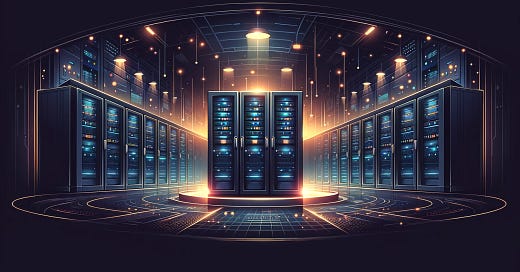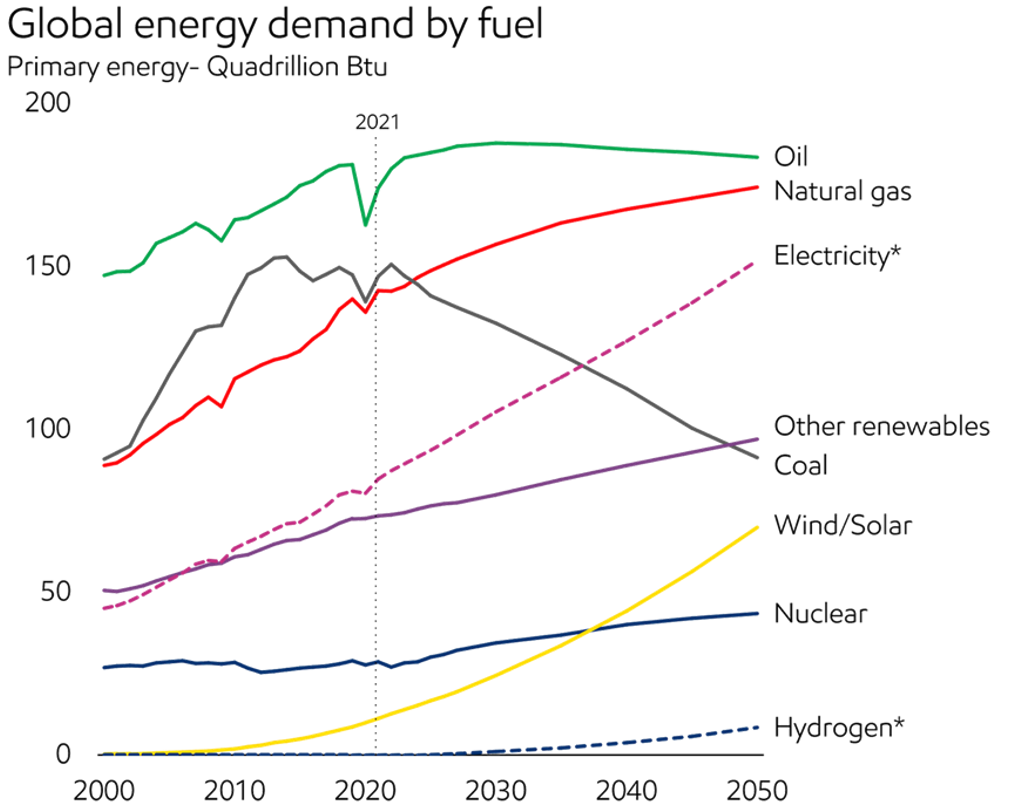Hi everyone🤘,
Thomas Edison’s prediction came true: "we will one day make electricity so cheap that only the rich will burn candles."
But Edison could never have imagined the threat discussed below.
Drum roll please 🥁,
Pete
P.S. amazing jobs as always at the bottom!
Modern Marvel: Towers of Power
High on humanity’s modern marvels is the accessible price of power. For over 140 years, America's electric grid has not only survived but thrived— 200K+ miles of towers and transmission lines weathering major trials like the 1965 Northeast Blackout and Hurricane Katrina in 2005. Additionally, the grid has adapted to continuous cybersecurity upgrades in response to ongoing cyber-attacks.
But a new threat requires further resilience, one Edison could never have imagined with his Pearl Street Electric Marvel: Artificial Intelligence.
The Hidden (+ Lethal?) Cost of Our Digital Habits
A surprising statistic reveals the extensive energy consumption driven by our digital habits:
A single Google search could power a 60-watt lightbulb for about 10 seconds.
A single ChatGPT query uses enough energy to power that same lightbulb for 10 minutes. 10 MINUTES.
These figures are staggering when considering the scale of global digital interactions daily. Do the mental math if AI was integrated into every Google Search (3.1 Trillion searches a year). We are talking about astronomical energy levels. The real threat to our grid isn’t just the operational toll of data centers, GPUs, or hardware depreciation—it's about sourcing, sutaining vast amounts of electricity.
Electricity: The Ultimate in-demand Fuel
Electricity will be the ultimate in-demand “fuel” by 2050. Look at the growth curve predicted by ExxonMobil:
Exxon may even be under-estimating the steepness of the electricity curve.
The Looming Stress Test: AI’s Impact on the US Electric Grid
As AI becomes entrenched in our daily lives, from simple web searches to complex data analytics, its hunger for electricity poses a critical challenge to the aging infrastructure of the US electric grid. We are now at a point where the annual energy consumption of Data Centers is surpassing full countries, per Enerdata:
Now consuming more than South Africa as of 2024, more staggering is that by 2026 data centers will consume as much electricity as Japan: 1,000 terawatts, as reported by International Energy Agency (IEA).
Grid: From One-Way Street to Complex Dance
The electric grid has transformed from a straightforward, centralized pathway to a complex, decentralized network. It's no longer just a one-way route from power plants to users but a bustling exchange, blending old and new energy sources, with homes and businesses also acting as mini power stations. Even electric vehicles are gearing up to double as mobile batteries:
Challenges to Edison’s Electric Grid
This modern grid is a live, ever-adapting entity, constantly tuning to the dance of supply and demand, pushing Edison's vision further into a future brimming with possibilities— but also un-predictabilities. Designed to handle predictable loads from households and industrial operations, the grid now struggles with the unpredictable, high-demand spikes caused by digital technologies like AI.
Increased Load and Peak Demand: AI increases the baseline electricity demand and exacerbates peak load challenges, creating potential for grid instability.
Aging Infrastructure: Much of the grid infrastructure is decades old and ill-equipped to handle erratic, high-demand loads from AI.
Renewable Integration Challenges: Integrating intermittent renewable energy sources with the consistent, high demand from AI operations presents significant technical hurdles.
Innovation Frontiers for Mitigating AI’s Threat
Grid Modernization: Upgrading the grid's physical components and investing in smart technologies can help manage the changing electricity demands.
Energy-Efficient AI Design: Developing more energy-efficient AI algorithms can reduce the technology's overall power consumption.
Deployment of Energy Storage Systems: Large-scale battery systems can help balance the supply and demand by storing excess energy during low-demand periods and releasing it during peak times.
Policy and Regulatory Frameworks: Governments must enforce policies that reduce energy consumption in the tech sector, providing incentives for energy-efficient practices and renewable energy usage.
Looking Forward
Thomas Edison's vision of affordable electricity became reality, shaping a grid that has endured over a century's challenges and technological leaps. America's grid, surviving blackouts and natural disasters, has also fortified against cyber threats. Yet, our digital era introduces a new strain: AI's voracious energy appetite, with a single ChatGPT query consuming enough electricity to light a bulb for 10 minutes (like: imagine that at scale!). As our grid morphs into an intricate energy web, AI's demands press us to reimagine infrastructure for a future Edison never foresaw.
Thanks for reading Future Beat! Subscribe for free:
Pete’s Picks: Cool Jobs, Cool Companies
There are open positions at some really cool companies. Check them out:







